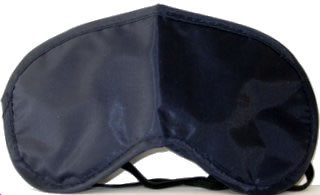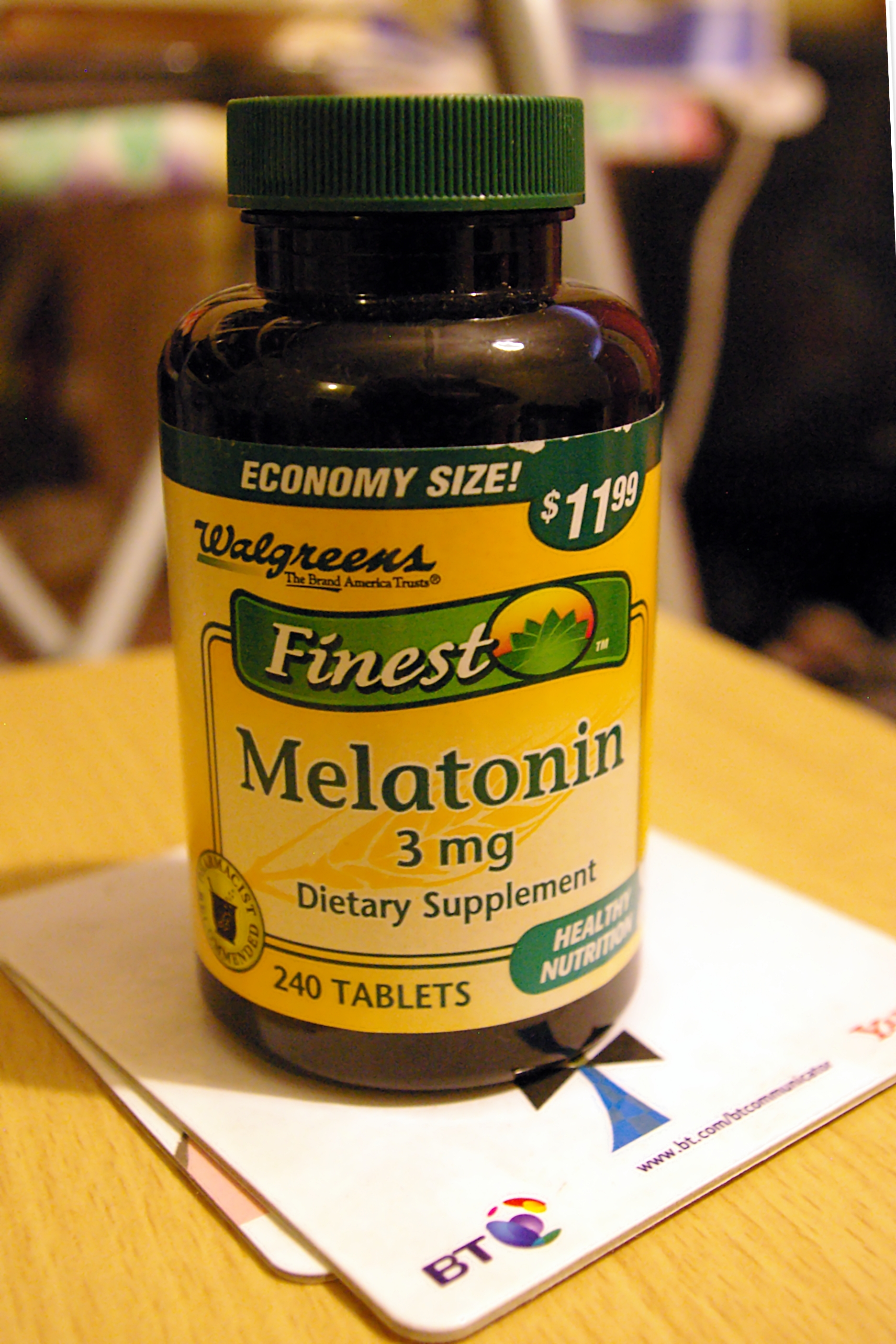|
Hypnotics
A hypnotic (from Greek ''Hypnos'', sleep), also known as a somnifacient or soporific, and commonly known as sleeping pills, are a class of psychoactive drugs whose primary function is to induce sleep and to treat insomnia (sleeplessness). This group of drugs is related to sedatives''. ''Whereas the term sedative describes drugs that serve to calm or relieve anxiety, the term hypnotic generally describes drugs whose main purpose is to initiate, sustain, or lengthen sleep. Because these two functions frequently overlap, and because drugs in this class generally produce dose-dependent effects (ranging from anxiolysis to loss of consciousness), they are often referred to collectively as sedative–hypnotic drugs. Hypnotic drugs are regularly prescribed for insomnia and other sleep disorders, with over 95% of insomnia patients being prescribed hypnotics in some countries. Many hypnotic drugs are habit-forming and—due to many factors known to disturb the human sleep pattern—a ... [...More Info...] [...Related Items...] OR: [Wikipedia] [Google] [Baidu] |
Alcohol (drug)
Alcohol, sometimes referred to by the chemical name ethanol, is the active ingredient in alcoholic drinks such as beer, wine, and distilled spirits (hard liquor). Alcohol is a central nervous system (CNS) depressant, decreasing Action potential, electrical activity of neurons in the brain, which causes the characteristic effects of alcohol intoxication ("drunkenness"). Among other effects, alcohol produces euphoria, anxiolytic, decreased anxiety, increased sociability, sedation, and impairment of cognitive, memory, motor control, motor, and sense, sensory function. Alcohol has a variety of adverse effects. Short-term effects of alcohol consumption, Short-term adverse effects include generalized impairment of neurocognitive function, dizziness, nausea, vomiting, and symptoms of hangover. Alcohol is addiction, addictive and can result in alcohol use disorder, Substance dependence, dependence, and Alcohol withdrawal syndrome, withdrawal upon cessation. The long-term effects of ... [...More Info...] [...Related Items...] OR: [Wikipedia] [Google] [Baidu] |
Nonbenzodiazepine
Nonbenzodiazepines (), sometimes referred to colloquially as Z-drugs (as many of their names begin with the letter "z"), are a class of psychoactive, depressant, sedative, hypnotic, anxiolytic drugs that are benzodiazepine-like in uses, such as for treating insomnia and anxiety. Nonbenzodiazepine pharmacodynamics are similar in mechanism of action to benzodiazepine drugs, acting as GABAA receptor positive allosteric modulator, GABAA receptor positive allosteric modulators of the benzodiazepine receptor, benzodiazepine site, and therefore exhibit similar benefits, side effects, and risks. However, nonbenzodiazepines have dissimilar or entirely different chemical structures, so are unrelated to benzodiazepines on a molecular level. Background Nonbenzodiazepines have demonstrated efficacy in treating sleep disorders. There is some limited evidence that suggests that drug tolerance, tolerance to nonbenzodiazepines is slower to develop than with benzodiazepines. However, data is limit ... [...More Info...] [...Related Items...] OR: [Wikipedia] [Google] [Baidu] |
Stilnoct2
Zolpidem, sold under the brand name Ambien among others, is a medication primarily used for the short-term treatment of sleeping problems. Guidelines recommend that it be used only after cognitive behavioral therapy for insomnia and after behavioral changes, such as sleep hygiene, have been tried. It decreases the time to sleep onset by about fifteen minutes and at larger doses helps people stay asleep longer. It is taken by mouth and is available as conventional tablets, extended-release tablets, or sublingual tablets. Common side effects include daytime sleepiness, headache, nausea, and diarrhea. More severe side effects include memory problems and hallucinations. While flumazenil, a GABAA receptor antagonist, can reverse zolpidem's effects, usually supportive care is all that is recommended in overdose. Zolpidem is a nonbenzodiazepine, or Z-drug, which acts as a sedative and hypnotic as a positive allosteric modulator at the GABAA receptor. It is an imidazopyrid ... [...More Info...] [...Related Items...] OR: [Wikipedia] [Google] [Baidu] |
Barbiturate
Barbiturates are a class of depressant, depressant drugs that are chemically derived from barbituric acid. They are effective when used medication, medically as anxiolytics, hypnotics, and anticonvulsants, but have physical and psychological addiction potential as well as overdose potential among other possible adverse effects. They have been recreational drug use, used recreationally for their anti-anxiety and sedative effects, and are thus prohibition of drugs, controlled in most countries due to the risks associated with such use. Barbiturates have largely been replaced by benzodiazepines and nonbenzodiazepines ("Z-drugs") in routine medical practice, particularly in the treatment of anxiety disorders and insomnia, because of the significantly lower risk of overdose, and the lack of an antidote for barbiturate overdose. Despite this, barbiturates are still in use for various purposes: in general anesthesia, epilepsy, treatment of acute migraines or cluster headaches, acute t ... [...More Info...] [...Related Items...] OR: [Wikipedia] [Google] [Baidu] |
Sedative
A sedative or tranquilliser is a substance that induces sedation by reducing irritability or Psychomotor agitation, excitement. They are central nervous system (CNS) Depressant, depressants and interact with brain activity, causing its deceleration. Various kinds of sedatives can be distinguished, but the majority of them affect the neurotransmitter Gamma-Aminobutyric acid, gamma-aminobutyric acid (GABA). Most sedatives produce relaxing effects by increasing GABA activity. This group is related to hypnotics. The term ''sedative'' describes drugs that serve to calm or Anxiolytic, relieve anxiety, whereas the term ''hypnotic'' describes drugs whose main purpose is to initiate, sustain, or lengthen sleep. Because these two functions frequently overlap, and because drugs in this class generally produce dose-dependent effects (ranging from anxiolysis to loss of consciousness), they are often referred to collectively as ''sedative–hypnotic'' drugs. Terminology There is some overlap ... [...More Info...] [...Related Items...] OR: [Wikipedia] [Google] [Baidu] |
Benzodiazepine
Benzodiazepines (BZD, BDZ, BZs), colloquially known as "benzos", are a class of central nervous system (CNS) depressant, depressant drugs whose core chemical structure is the fusion of a benzene ring and a diazepine ring. They are prescribed to treat conditions such as anxiety disorders, insomnia, and seizures. The first benzodiazepine, chlordiazepoxide (Librium), was discovered accidentally by Leo Sternbach in 1955, and was made available in 1960 by Roche, Hoffmann–La Roche, which followed with the development of diazepam (Valium) three years later, in 1963. By 1977, benzodiazepines were the most prescribed medications globally; the introduction of selective serotonin reuptake inhibitors (SSRIs), among other factors, decreased rates of prescription, but they remain frequently used worldwide. Benzodiazepines are depressants that enhance the effect of the neurotransmitter gamma-Aminobutyric acid, gamma-aminobutyric acid (GABA) at the GABAA receptor, GABAA receptor, resulting ... [...More Info...] [...Related Items...] OR: [Wikipedia] [Google] [Baidu] |
Sleep Induction
Sleep induction is the deliberate effort to bring on sleep by various techniques or medicinal means, is practiced to lengthen periods of sleep, increase the effectiveness of sleep, and to reduce or prevent insomnia. Darkness and quiet Dim or dark surroundings with a peaceful, quiet sound level are conducive to sleep. Retiring to a bedroom, drawing the curtains to block out daylight and closing the door are common methods of achieving this. When this is not possible, such as on an airplane, other methods may be used, such as masks and earplugs for sleeping which airlines commonly issue to passengers for this purpose. Activities Guided imagery To relax and encourage sleep, a meditation in the form of guided imagery may be used. The stereotypical method is by counting sheep, imagining sheep jumping over a fence, while counting them. In most depictions of the activity, the person envisions an endless series of identical white sheep jumping over a fence, while counting the number ... [...More Info...] [...Related Items...] OR: [Wikipedia] [Google] [Baidu] |
Insomnia
Insomnia, also known as sleeplessness, is a sleep disorder where people have difficulty sleeping. They may have difficulty falling asleep, or staying asleep for as long as desired. Insomnia is typically followed by daytime sleepiness, low energy, irritability, and a depression (mood), depressed mood. It may result in an increased risk of accidents of all kinds as well as problems focusing and learning. Insomnia can be short term, lasting for days or weeks, or long term, lasting more than a month. The concept of the word ''insomnia'' has two distinct possibilities: insomnia disorder (ID) or insomnia symptoms, and many abstracts of randomized controlled trials and systematic reviews often underreport on which of these two possibilities the word refers to. Insomnia can occur independently or as a result of another problem. Conditions that can result in insomnia include psychological stress, chronic pain, heart failure, hyperthyroidism, heartburn, restless leg syndrome, menopause ... [...More Info...] [...Related Items...] OR: [Wikipedia] [Google] [Baidu] |
Psychoactive Drug
A psychoactive drug, psychopharmaceutical, mind-altering drug, consciousness-altering drug, psychoactive substance, or psychotropic substance is a chemical substance that alters psychological functioning by modulating central nervous system activity. Psychoactive and psychotropic drugs both affect the brain, with psychotropics sometimes referring to psychiatric drugs or high-abuse substances, while “drug” can have negative connotations. Designer drug, Novel psychoactive substances are designer drugs made to mimic illegal ones and bypass laws. Psychoactive drug use dates back to prehistory for medicinal and consciousness-altering purposes, with evidence of widespread cultural use. Many animals intentionally consume psychoactive substances, and some traditional legends suggest animals first introduced humans to their use. Psychoactive substances are used across cultures for purposes ranging from medicinal and therapeutic treatment of Mental disorder, mental disorders and pain, ... [...More Info...] [...Related Items...] OR: [Wikipedia] [Google] [Baidu] |
Ramelteon
Ramelteon, sold under the brand name Rozerem among others, is a melatonin agonist medication which is used in the treatment of insomnia. It is indicated specifically for the treatment of insomnia characterized by difficulties with sleep onset. It reduces the time taken to fall asleep, but the degree of clinical benefit is small. The medication is approved for long-term use. Ramelteon is taken oral administration, by mouth. Side effects of ramelteon include somnolence, dizziness, fatigue (medical), fatigue, nausea, exacerbated insomnia, and changes in hormone levels. Ramelteon is an structural analog, analogue of melatonin (medication), melatonin and is a binding selectivity, selective agonist of the melatonin receptor, melatonin MT1 receptor, MT1 and MT2 receptor, MT2 receptors. The elimination half-life, half-life and duration of action, duration of ramelteon are much longer than those of melatonin. Ramelteon is not a benzodiazepine or Z-drug and does not interact with GABA r ... [...More Info...] [...Related Items...] OR: [Wikipedia] [Google] [Baidu] |
Melatonin (medication)
Melatonin is a naturally occurring hormone produced in the brain that is also used as a dietary supplement and medication. As a hormone, melatonin is released by the pineal gland and is involved in sleep–wake cycles. As a supplement, it is often used for the short-term treatment of disrupted sleep patterns such as from jet lag or shift work, and is typically taken orally. There is evidence of its benefit for insomnia, but the evidence is not strong. A 2017 review found that sleep onset occurred six minutes faster with use on average, but found no change in total time asleep. Side effects from melatonin supplements are minimal at low doses for short durations (the studies reported that side effects occurred about equally for both melatonin and placebo). Side effects of melatonin are rare but may occur in 1 to 10 patients out of 1,000. They may include somnolence, headaches, nausea, diarrhea, abnormal dreams, irritability, restlessness, insomnia, anxiety, migraine, leth ... [...More Info...] [...Related Items...] OR: [Wikipedia] [Google] [Baidu] |




